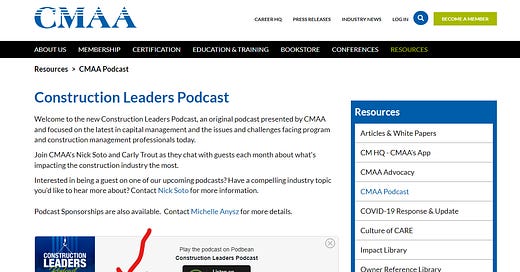Hey! Happy Saturday! Matt here. Welcome to the Construction Curiosities newsletter. Especially to the New Subscribers.
THANK YOU to those that have shared this with their friends, coworkers, and frenemies. This newsletter wouldn’t continue to grow without all of your continued support!
For those that haven’t shared it… What’s your problem man?!?
This wee…
Keep reading with a 7-day free trial
Subscribe to Construction Yeti to keep reading this post and get 7 days of free access to the full post archives.




